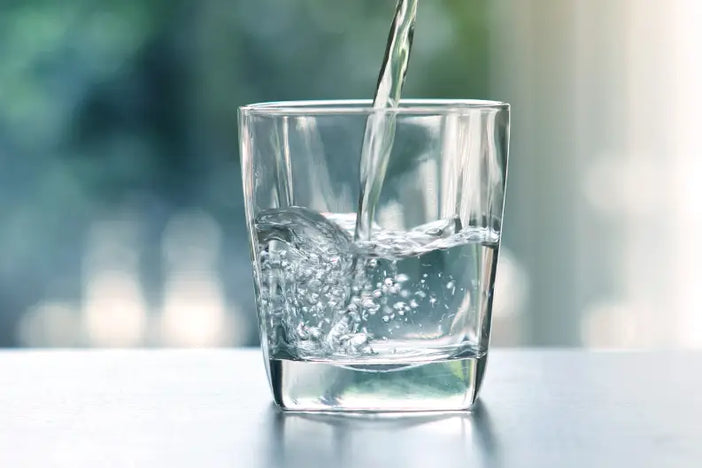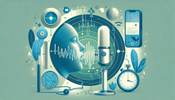Why Does Diabetes Make You So Thirsty?

We’ve always been told to drink plenty of water. But do you ever feel like a thirsty camel gulping down water in a desert oasis?
You can’t seem to quench your thirst, even though you’re drinking more than the recommended two liters daily?
Some people get thirsty because of the hot weather or intensive exercise, but it can mean something different for a person with diabetes. If your glucose levels are high, your body will try to eliminate the excess sugar in your blood.
It does this in two different ways:
- First, it absorbs the glucose into your cells for energy.
- Second, it flushes the glucose out of your body completely.
Continue reading to learn why this happens and what you can do about it. Rest assured, you can avoid or minimize excessive thirst related to diabetes by follow a healthy diet and exercise plan suitable for people who have diabetes–alongside your health practitioner’s care plan.
Why Blood Sugar Imbalance Causes Excessive Thirst?
As you are well aware, diabetics have trouble maintaining health levels ofglucose in their bodies because they are unable to use insulin to control their blood sugar levels.
Diabetes mellitus, known simply as diabetes, comprises both type 1 (the autoimmune diabetes) and type 2 diabetes (adult onset diabetes)–-both of which can cause excessive thirst and urination when the glucose in the b
When your body is out of balance, it’ll try to correct it–often causing more problems than the initial cause.
You can think of your body like your trusty old car that’s gotten out of whack because you didn’t schedule a proper maintenance routine or react in time to the initial warning lights. Once a problem goes ignored, a chain of problems occur.
The same goes for diabetes.
To correct high glucose in your blood, your body will create extra urine to release the excessive blood sugar.
Here begins the onslaught of challenges for your body.

The Vicious Cycle of Thirst and Urination in Diabetes
Experiencing thirst more frequently than usual, known as polydipsia in the medical world, is a sign of uncontrolled diabetes, as we noted before.
This can go hand in hand with excessive urination, a condition known as polyuria.
As a result, you can enter an endless cycle. Anytime you release fluids in your body, you release water–which is completely necessary to stay healthy.
You know the old adage. “Your body is nearly 60% water.”
If you lose too much water, you not only can dehydrate; you can also spike your blood sugar.
So now you have two problems you need to treat.
Dehydration can cause a number of major health issues including
- retinopathy
- renal failure
- risk of heart disease
- high blood sugar
- and even nerve damage if not treated
This underscores how crucial it is for people with diabetes to manage their disease by drinking enough fluids and adopting a habit of continuous blood sugar control through a healthy diet, exercise, and treatment plan.
Can excessive thirst be confused with another problem?
Excessive thirst and urination can easily be confused with diabetes insipus, a rare condition that’s not related to glucose at all. It’s actually a problem with hormones that impacts the kidneys, which we can put aside for all intents and purposes.
Certain mental illnesses and brain injuries can also cause an excessive need to drink water,which is actually quite problematic. You can actually over hydrate, which can cause you to dangerously dilute your blood– a symptom known as hyponatremia.
Bottom line: You should speak to your doctor if you are experiencing excessive thirst and urination. It could be a symptom of your diabetes or something equally serious.
What are the symptoms of diabetic excessive thirst (polydipsia)
At various points throughout the day, we all experience thirst. But diabetes can intensify your thirst if your glucose levels are too high.
Here’s a quick checklist of symptoms:
- A persistent thirst that doesn't go away despite drinking a lot
- Urinating more than five liters each day
- Needing to urinate often
- Dry mouth (cottonmouth)
If the symptoms are severe enough, they can cause:
- headaches
- Dizziness
- Fatigue
- Low blood pressure
- and even confusion
What Can You Do to Manage Diabetic Thirst?
Keeping blood sugar levels in check will assist with the reduction, management, and eventual end of a diabetic thirst. In short, this means following your treatment plan, which should include a proper low-glycemic diet, exercise, and treatment guided by your medical provider.
Here are some tips to help you stay on track with your blood sugar.
- Check your blood glucose levels before and after each meal using a home monitor
- Record your regular blood sugar levels in a journal
- Make a foodschedule for each day of the week to promote healthy habits
- Eat healthy, balanced meals with a low-glycemic index as much as possible
- Include a lot of fiber in your diet
- Exercise daily
- Track your movement to make sure you're getting adequate daily exercise
- Get a fitness partner and/or diet partner create accountability with your goals
- Maintain a healthy weight
- Note any abnormal symptoms you experience
Remember, you’ve got this. If you need support, you’ve got a 100,000+ community ready to help you get or stay on track.
A Final Tip for Diabetes Thirst
One of the major signs of diabetes canbe excessive thirst. This symptom, along with others, can be avoided or minimized with proper diabetes management. Diabetes requirescloser attention to your health, particularly your diet and exercise routine.
Don't disregard extreme thirst or any other diabetic indicators if you've already been given a diagnosis. Check in with your doctor if you notice that you’re urinating more or feeling more thirsty than usual.If necessary, your doctor may adjust your diabetes medication or treatment.
You can also improve your health by following a healthy, diabetic-friendlylifestyle and diet..
Join our community
One of the best ways to live a high quality of life as a person with diabetes is through community support from people on the same journey as you. If you have not already joinedoin the Winning Type 2 Diabetes Together community on Facebook, you’re invited to join.
If you’re already a member, go ahead and introduce yourself or engage with your peers. You’ve got thousands of other diabetics around the world waiting tosupport you and/or listen to your advice. You can even exchange your laughter medicine, if that’s your thing.



